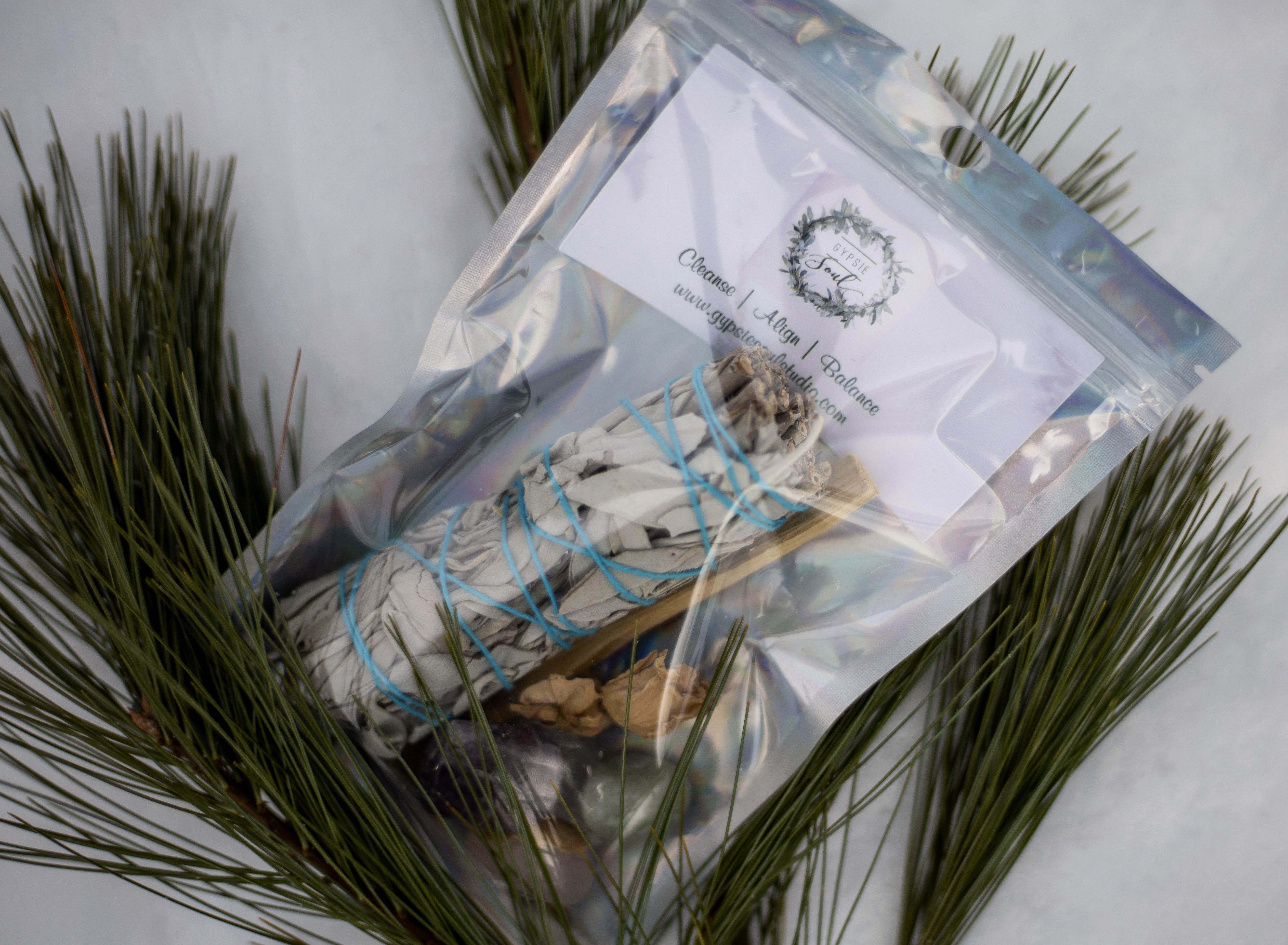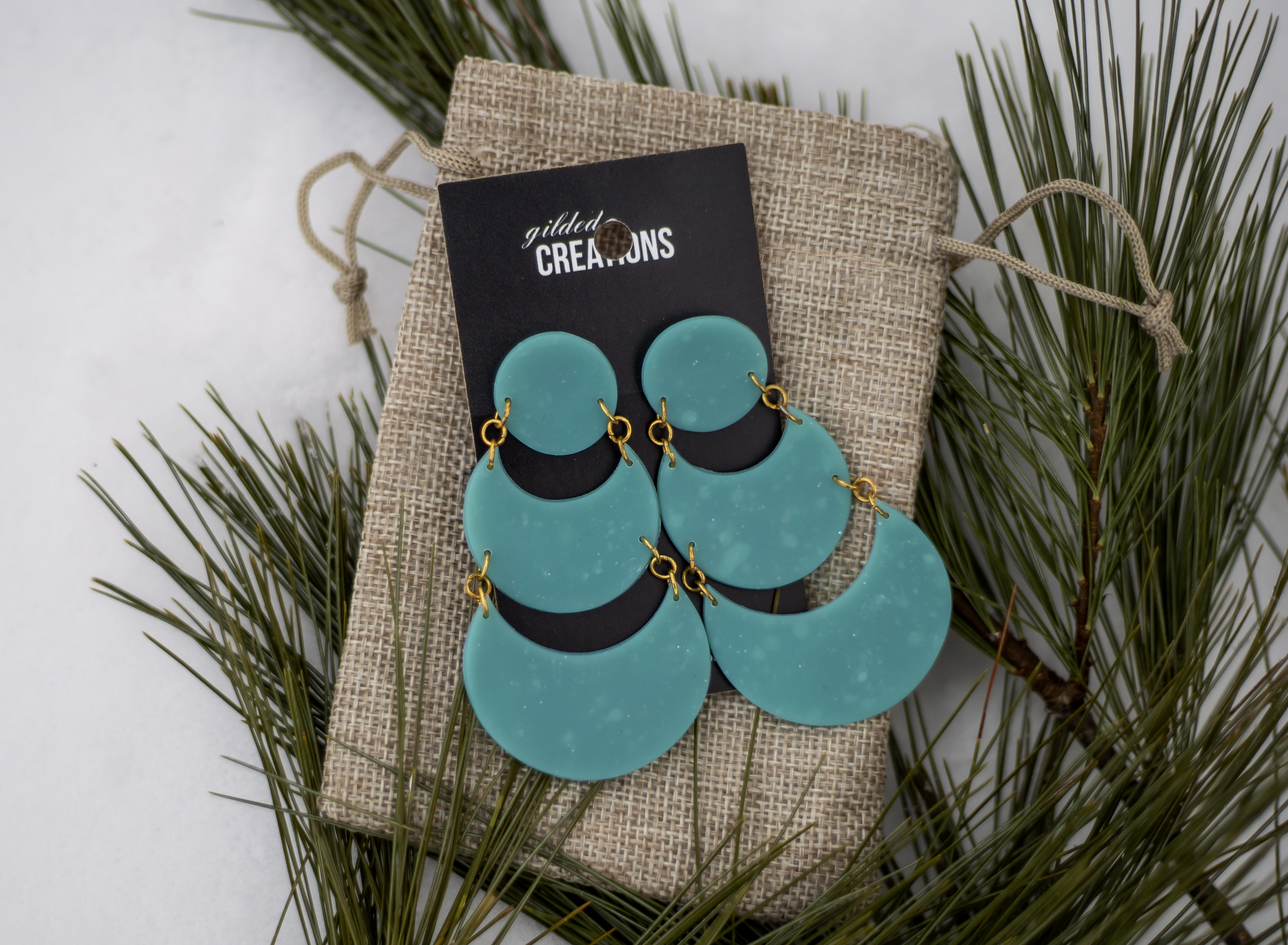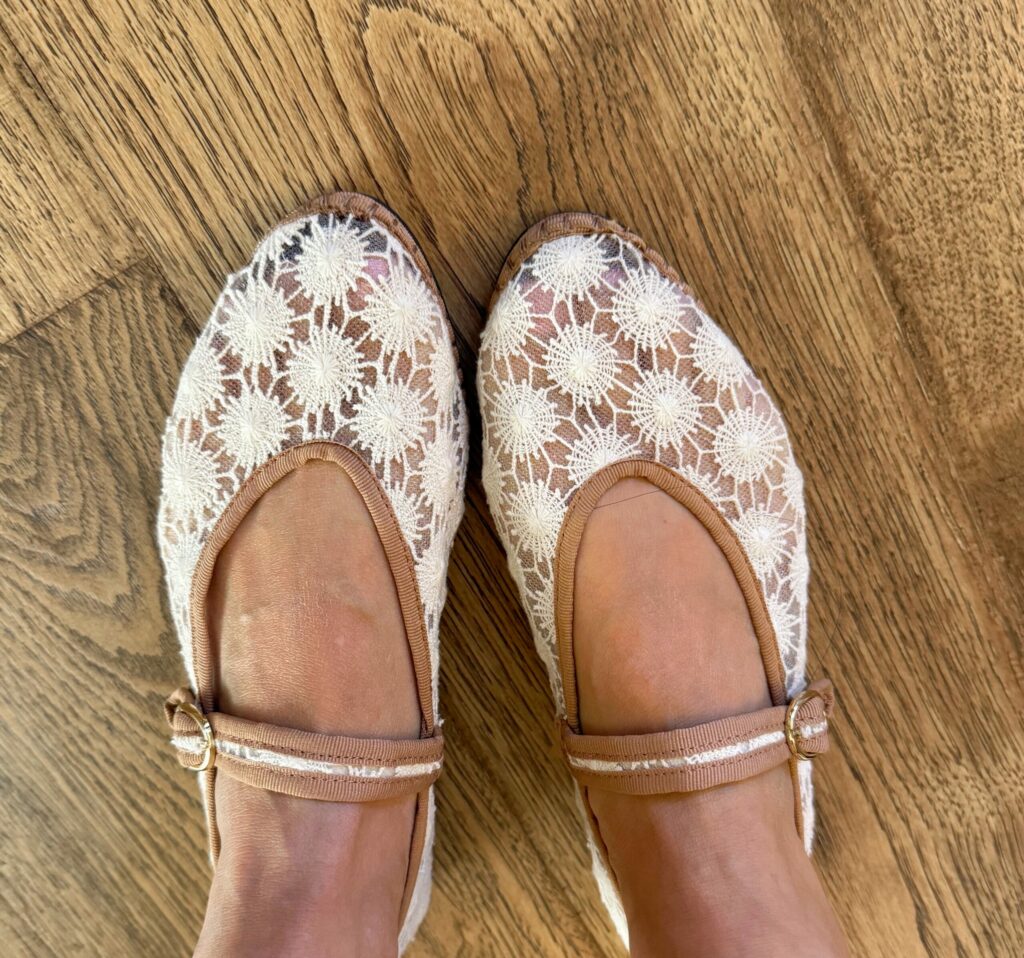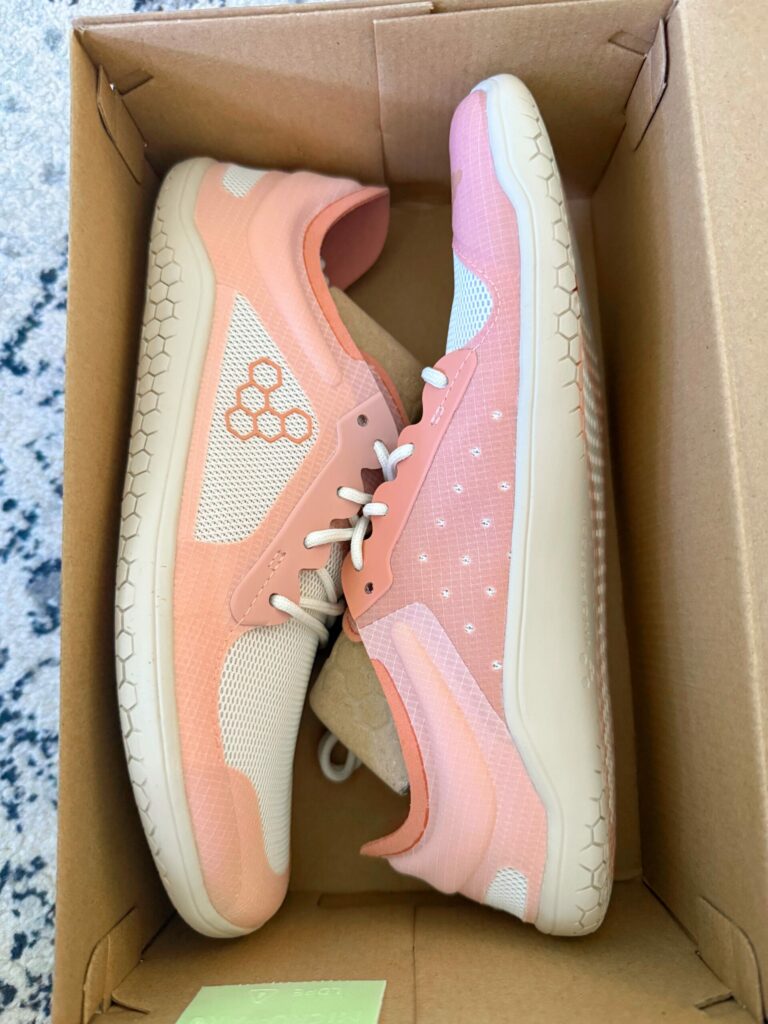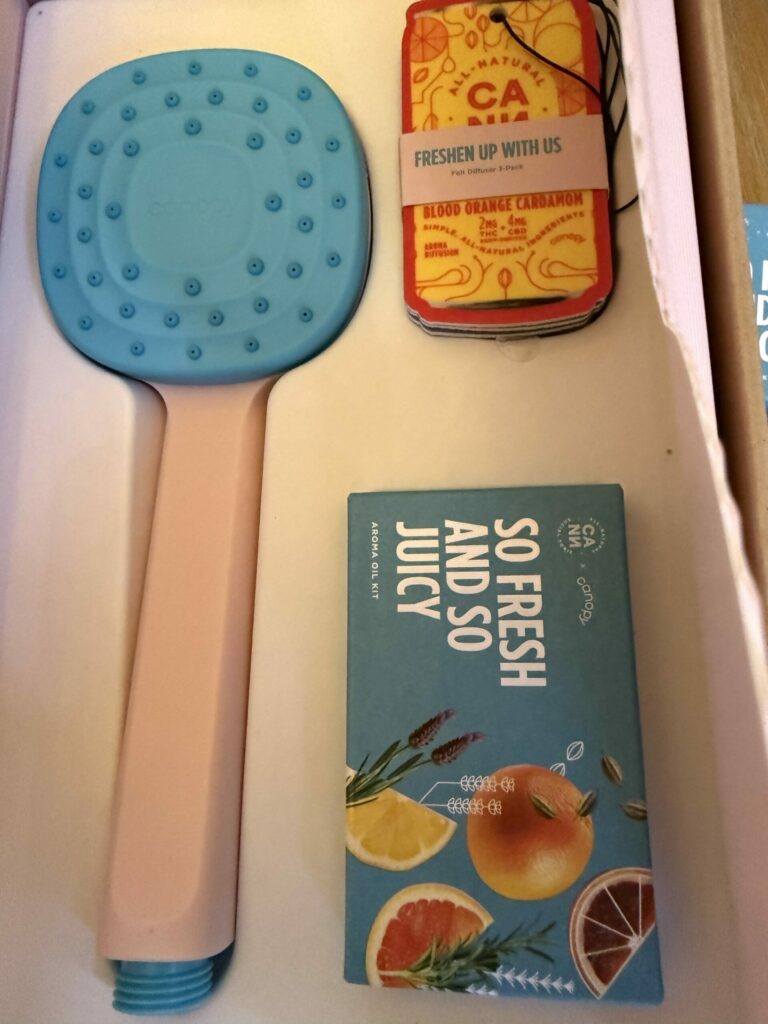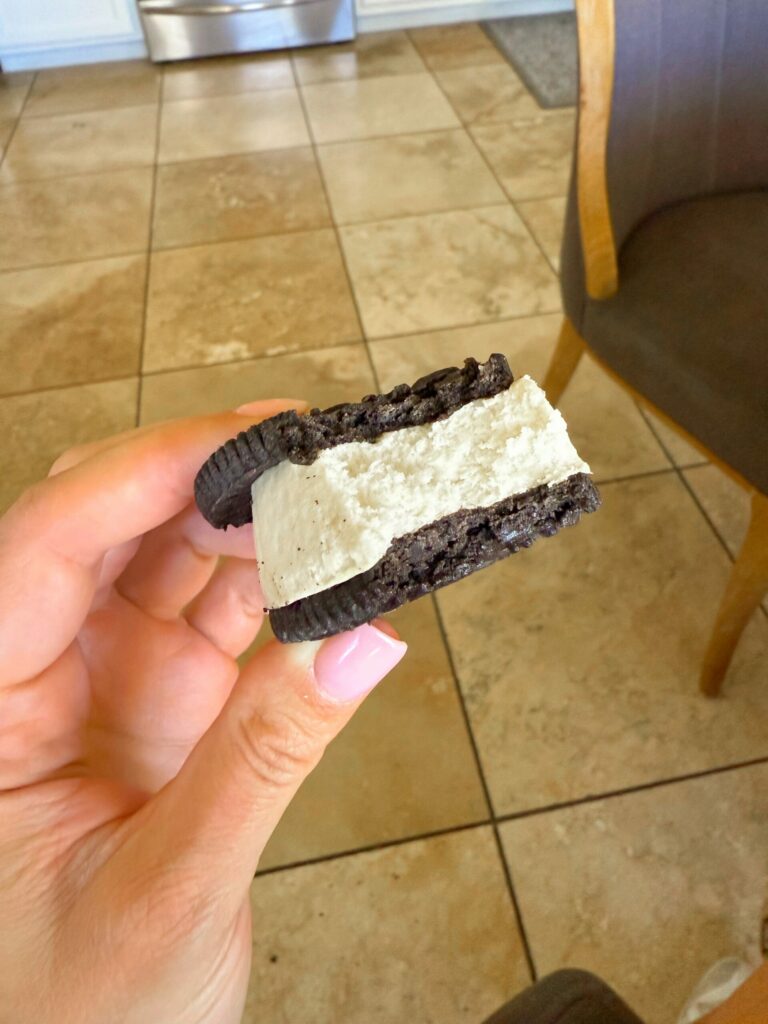
When I was younger, I assumed that by the time I got to my 40s, I wouldn’t be as strong or fit or capable. In some ways, I don’t think it really crossed my mind at all—what my body would be able to do in my 40s. Like so many people in their twenties, thinking that far ahead wasn’t something I did often.
My Movement Journey: From Yoga to Strength Training
I was 24 when I started teaching yoga in 2005. It became the central focus of my life, as well as my primary movement practice. I was also a runner, so between yoga and running, I figured I had all of my fitness needs covered.
I didn’t lift weights or do any impact training. I was mostly interested in doing things that made me bendier and smaller. And because I was still young, I wasn’t worried about strength. Yoga made me feel strong enough when I did arm balances and handstands. I could easily lift things that seemed heavy.
I didn’t start lifting weights until after the birth of my first child. My recovery was slow, and my body didn’t feel great. Yoga wasn’t really helping. Running didn’t help either. So I decided to try strength training—and almost immediately, I felt a significant change. Yes, I felt stronger. But I also felt less damaged and disconnected. I felt whole again.
That was 12 years ago.
Stronger in My 40s Than Ever Before
Now that I’m actually in my 40s, I’m stronger than ever. Much stronger than I was in my twenties, when I did hours of yoga daily and ran 3–4 times a week. I still run and do yoga, but I now do a lot more strength training—focused on heavier lifting. And I take three dance classes a week.
This is counter to the messages often directed at women my age and heading into perimenopause.
Confusing Advice for Women in Perimenopause
While the current advice does include lifting weights, we are encouraged to “go easy” during this time of life. Some of the advice is conflicting and confusing and a lot of the advice is filtered through diet culture and still focused on how women in perimenopause need to manage our weight gain to manage our perimenopausal symptoms.
Alison Heilig, editor-in-chief of FBG, told me that this unhelpful, contradictory advice does more harm than good for women in perimenopause.
“My clients are given bad advice all the time. There’s a ton of misinformation out there targeting women in this age group. Menopause is having a moment, and the grifters are grifting hard.
People are selling expensive supplement stacks to “balance your hormones” (which isn’t even a thing, BTW) that are a complete waste of money. They’re also marketing and selling weighted vests and “special” workouts for women over 40 (hello, pink tax).
Their workout suggestions range from ‘low impact and just walk more so you don’t raise your cortisol’ to ‘Lift heavier! Do more HIIT! You’re losing muscle—go harder!’ Neither extreme addresses the actual lived reality of women in midlife.”
Why We Fall for Fitness Myths During Perimenopause
Women are especially vulnerable to unfounded health claims. We’re often gaslit by medical providers and our symptoms dismissed as “women’s issues.” Meanwhile, women’s health remains significantly understudied and underfunded.
So what happens? People on the internet try to fill the gap by selling us expensive supplements, weighted vests, and “special” midlife workout plans—with no real evidence to support their claims.
What We Actually Know About Perimenopause
When hormones start fluctuating, women can experience:
-
Hot flashes
-
Sleep disturbances
-
Brittle nails, dry skin, and hair loss
-
Joint pain and decreased bone density
-
Mood shifts, irritability, anxiety, and fatigue
All of this affects how we move—but the advice we get rarely matches our real-life experience.
How Movement Professionals Are Navigating Perimenopause
I spoke to several women, all of whom are also movement professionals, to get a sense of how their movement practice has been impacted by perimenopause relative to broader advice given to women at this stage of life.
Kristy West: Prioritizing What Feels Good
Kristy West is a yoga teacher and personal trainer. She’s been active for her whole life and enjoys movement. Perimenopause didn’t radically change things for her, but she has adjusted how she moves her body. Instead of doing intense cardio like running or heavy lifting, both of which create more physical discomfort than they used to, she focuses more on activities that feel good in her body.
“I have taken a liking to water walking. I love being in the water. I’m trying to get back into swimming too so that I have a routine set up once the summer pools close. I’m also doing a lot of gardening,” she says. “In terms of more traditional movement/exercise, I have to keep reminding myself that something is better than nothing.”
As far as the more intense cardio and weight lifting, she explains, “I don’t run much anymore. But that’s more because I don’t really like it. Walking/hiking is much more pleasurable for me. I don’t go as hard as I used to in terms of lifting weights. While I am capable of living heavier, extreme DOMS (delayed onset muscle soreness) takes a toll and I am miserable for days. My DOMS is a symptom of hypermobility, but it seems to be more extreme later in life.”
West has noticed one common side effect of perimenopause that has slowed her down slightly, which is weight gain. For her, it’s less about how her body looks and more that it impacts how her body moves.
“Weight gain has definitely made exercise harder,” she says. “The weight gain only bothers me because it affects my range of motion, and that’s annoying AF.”
West explains that what feels most important to her as she goes through perimenopause is to keep moving and to figure out what helps make movement more possible to support that goal. For her, that means doing less solo movement and more movement with a friend or a group, like pickleball or softball.
And while she’s aware that research indicates movement is essential as we age, what inspires her is more personal. “I’m more aware of the importance of being active now. I see relatives who can barely move, and I don’t want to end up like that. My motto is ‘I want to die with all my original parts.’”
Jen Dryer: Adding Strength to Support Resilience
Like West, Jen Dryer has been active her whole life. When she was growing up, she was drawn to a wide range of sports, participating in gymnastics, diving, tennis, and soccer. As a young adult, she regularly went to the gym and also discovered yoga.
Now a yoga teacher herself, she realized that the benefits of movement for her go beyond just the physical. “Since becoming a parent almost 16 years ago, movement has become critical to my self-regulation and ability to show up as the best parent I can be.”
As she ages and moves through perimenopause, Dryer recognizes that the physical piece has become increasingly more important, too, especially when it comes to diversifying movement and boosting strength.
“About 6-7 years ago, I added cardio and strength training to my regular exercise regimen, first via OrangeTheory and then when Covid hit, I got a Peloton bike to help with both a torn ACL and to keep my cardio going. I’ve since started doing a lot more strength training via the Peloton app, and based on what I read about the need for strength training in peri and post menopause, I have been committed to balancing the yoga with lifting heavy weights and cardio training.”
The research backs up Dryer’s approach to movement. As estrogen decreases, our bone mineral density (BMD) decreases and the current research indicates that strength training is the best way to increase BMD. Yoga simply isn’t enough.
But like West, Dryer says that the important thing for her and others as they go through perimenopause and get older is to have a good balance of movement. You can’t rely on one type of movement to meet all of your needs for health. And what’s most important is to keep up the habit of moving your body.
“My advice for women heading into perimenopause is to add in a balance of regular movement: definitely add strength training, even if it’s barre or pilates. Also cardio and mobility and stretching in general is a must. My PT always says that “motion is lotion” so it’s key to keep the body moving to lubricate joints and prevent injury.”
Dara Brown: Finding Joy in Movement Variety
Dara Brown is a big believer in movement variety. Brown is an ERYT 500 yoga teacher, ACE certified personal trainer, and group exercise instructor, so not only does she offer a wide range of movement practices to her students but she adopts them in her personal practice.
This dedication to movement variety was essential to her when she was diagnosed with fibroids at age 40. At the time she was in the best shape of her life but heavy, unpredictable periods resulted in severe anemia, which made the movement practices she loved physically exhausting.
She says that movement advice about perimenopause was unclear and inconsistent, which was annoying. “I was told absolutely nothing about exercise by a medical professional and online resources were all over the place like ‘no intense cardio’ (but I enjoy it) and more strength training (ok – I get that part, especially now that I can’t ignore the fact I’m aging).”
She adds, “Cutting back on intense cardio was counter to everything I knew as a fitness professional. What is intense to one person isn’t to another. Besides, it’s fun. Did I have to cut back because of the anemia? Yes. But that wasn’t a choice more so than a need. And it caused much frustration.”
This is incredibly common. Not only is there a lack of perimenopausal study but also wildly conflicting information about what types of movement are best for women as they age. It’s hard to know what the right thing to do is, especially if you’re not a fitness professional who does this work for a living.
Now postmenopausal thanks to a hysterectomy, Brown is back to movement that makes her feel strong instead of depleted.
“My movement practice now hasn’t decreased any though the activities have changed a bit. I have introduced more strength training by means of aerial circus arts because I can only lift so many weights. I’m still running and completed my first marathon last fall. And my yoga mat is still my best friend a few days a week.”
Her advice to perimenopausal women: “ Keep moving – anyway that makes you feel good.”
Adapting to Perimenopause Isn’t Weakness—It’s Strategy
Heilig, co-signs this advice. The idea isn’t necessarily to “slow down” or “ease into perimenopause” because your body is getting older and automatically less strong. It’s about figuring out how to tailor your movement practices to the needs of your life.
When Heilig started perimenopause, the symptoms hit hard and she was simultaneously suddenly thrust into an intense caregiving situation, while still trying to run her business. Moving her body took a backseat because she felt so depleted, but not training had really negative impacts. She says:
“I was exhausted all the time, but not the kind of tired that goes away with rest. My usual workouts felt too long, too intense, and too draining—but skipping them made everything worse. Without regular exercise, my sleep tanked. My joints started hurting. My mental health spiraled. And worst of all—I started losing my sense of identity. I wasn’t training. I wasn’t recovering. I wasn’t myself.”
Once she figured out how to adapt her training to better support her in this intense period of life, things got better. Now, she says, her workouts are shorter and more flexible, but no less impactful.
“I simplified everything and let go of needing to ‘do it all perfectly.’” I decided that sustainability was more powerful than intensity. And I built a more flexible system that actually supports my midlife body, schedule, and competing demands,” she explains. “And you know what? Even though I work out less and with less overall intensity, I’m still very fit and healthy. Workouts don’t have to destroy you or take over your life to be effective.”
She adds, “I don’t ‘go hard’ every day. I don’t do workouts that wreck me anymore. I focus more on prioritizing rest, downtime, sleep, and energy—not just effort and output. I train to feel strong, durable, and resilient.”
I can relate to this. And honestly it’s validating to hear that the goal is to feel strong, durable, and resilient in pursuit of health as we age, as opposed to reducing belly fat or trying to reclaim the “former glory” of our youth.
Like Brown, I ran my first half marathon (ok, only “half” like Brown) this year at the age of 44. But I decided my goal wasn’t speed but simply to finish. When I was younger, I’d likely have pushed harder and worn myself out in pursuit of a faster time. But running like that doesn’t feel good now. I actually enjoy running, so I’d rather keep running regularly but in a way that doesn’t wreck my body.
What Women Really Need After 40
There isn’t a special perimenopause workout regimen that is somehow specific to this stage of life. Heilig adds:
“The things we should be doing after 40 to maintain good health and manage perimenopausal symptoms are basically the same things we should have been doing our entire adult lives to stay fit and healthy: lift heavy stuff, hop, jump, get your heart rate up, change direction, do joint stability work, increase fiber and protein, and reduce saturated fats.
I know that’s boring and sounds hard, but it works at age 25 and it works at age 57. You don’t need to pay extra for fancy women-only workout programs. You may have been able to get away with skipping some of these basics when you were younger, but as we get older, these basics become even more critical for a good quality of life.”
Heilig goes on to point out something critical here—the fundamentals of healthy movement don’t change but our lives that do.
“What does change after 40 is that our lives are fuller, we’re usually caring for more people, our jobs are higher stakes, and our energy is less predictable. That’s why it helps to work with a coach who understands the challenges women face in this phase of life—because those are very real challenges that no amount of ‘willpower’ or ‘motivation’ can get around. At this time, women need more efficient strategies that honor where they are and what they have left to give. What they don’t need is some 20-something gym bro telling them ‘no excuses.’”
Final Thoughts: It’s Not About Reclaiming the Past—It’s About Building the Future
It can be really hard to cut through all of the noise online and off that tries to convince women that perimenopause is a problem that needs to be fixed. There is so much misinformation out there from people who want to profit on the lack of scientific study and clear information about perimenopause.
That can make it difficult for women in perimenopause to not only get the support they need but also to maintain a movement practice that works for them.
For that, Heilig has this advice:
“Focus on the big dial movers. Work with an evidence-based coach who isn’t selling a “trick”—just real support and real systems to help you do what actually matters. That’s what we focus on in my LIMITLESS coaching program. You’ll waste a lot less time, energy, and money that way. And remember: exercise and nutrition in midlife isn’t about “anti-aging,” “bouncing back,” or getting some past version of your body back. It’s about building your future quality of life. Your workout and nutrition routine should reflect that.”
And I could not agree more. What’s your approach to fitness after 40? —Naomi




![Small Business x 5 Giveaway!! [Days of Giveaways 2020] Small Business x 5 Giveaway!! [Days of Giveaways 2020]](https://i3.wp.com/www.powercakes.net/wp-content/uploads/2020/12/IMG_4828.jpg?w=1200&resize=1200,0&ssl=1)
![Small Business x 5 Giveaway!! [Days of Giveaways 2020] Small Business x 5 Giveaway!! [Days of Giveaways 2020]](https://www.powercakes.net/wp-content/uploads/2020/12/IMG_4828.jpg)
